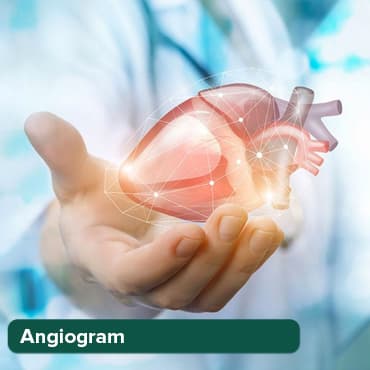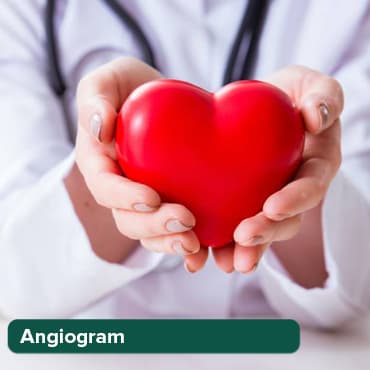
The Role of Diet and Lifestyle in Chemical Peel Recovery
16 Nov, 2023
 Healthtrip Team
Healthtrip TeamChemical peels are a highly sought-after dermatological treatment, esteemed for their efficacy in enhancing skin appearance. These procedures are integral to contemporary skin rejuvenation strategies. However, it is paramount to acknowledge that the success of a chemical peel extends beyond the procedure itself; the post-treatment recovery phase is critical. The healing process is profoundly influenced by diet and lifestyle choices, which can significantly affect both the rate and the caliber of the recovery.
Transform Your Beauty, Boost Your Confidence
Find the right cosmetic procedure for your needs.

We specialize in a wide range of cosmetic procedures

The Importance of Hydration in Post-Chemical Peel Recovery
a. Water is Key:
- Mechanism of Action: Following a chemical peel, your skin embarks on a crucial regeneration phase. This phase necessitates enhanced hydration for several reasons. Firstly, water aids in maintaining the moisture balance of the newly exposed skin layers, which is vital for effective healing. Secondly, adequate hydration facilitates the removal of damaged skin cells and supports the growth of new, healthy skin tissue. This process is pivotal in achieving the desired rejuvenating effects of a chemical peel.
- Quantity Guidelines: While individual hydration needs can vary based on factors like body weight, climate, and overall health, a general rule of thumb is to drink at least 8-10 glasses of water daily. This amount should be adjusted according to personal needs and environmental conditions. To further enhance hydration, incorporating water-rich foods into your diet is highly beneficial. Foods like cucumbers, watermelon, strawberries, and lettuce are not only hydrating but also provide essential nutrients that support skin health.
b. Avoid Alcohol and Caffeine:
- Dehydrating Effects: Alcohol and caffeine act as diuretics, meaning they increase the frequency of urination, leading to greater fluid loss. This diuretic effect can exacerbate dehydration, which is particularly detrimental during the healing phase post-chemical peel. Dehydrated skin can become dry and more prone to irritation, which may hinder the recovery process and potentially impact the overall results of the peel.
- Alternative Beverages: To mitigate the risk of dehydration, consider substituting alcohol and caffeine with hydrating alternatives. Herbal teas, such as chamomile or peppermint, can be excellent choices as they are soothing and free from caffeine. Infused waters, where fruits or herbs are steeped in water, offer a refreshing and hydrating alternative, providing subtle flavors without any diuretic effects. These beverages not only contribute to your overall fluid intake but also provide a variety of antioxidants and phytonutrients beneficial for skin health.
In summary, maintaining optimal hydration is a critical component of the post-chemical peel recovery process. It supports the skin's healing and regeneration, ensuring that the results of the peel are maximized. By focusing on water intake, incorporating hydrating foods, and avoiding diuretic substances like alcohol and caffeine, you can significantly enhance your skin’s recovery and overall health post-treatment.
Nutritional Support for Skin Healing in Post-Chemical Peel Care
a. Vitamins and Minerals:
Most popular procedures in India
Atrial septal defect
Upto 80% off
90% Rated
Satisfactory

Coronary Angiogram a
Upto 80% off
90% Rated
Satisfactory

Coronary Angiogram C
Upto 80% off
90% Rated
Satisfactory

Liver Transplant
Upto 80% off
90% Rated
Satisfactory

Total Hip Replacemen
Upto 80% off
90% Rated
Satisfactory

- Key Nutrients: Vitamins A, C, and E play pivotal roles as antioxidants in the skin's healing process. Vitamin A is essential for cell growth and regeneration, making it crucial for repairing the skin after a chemical peel. Vitamin C is integral in collagen synthesis, aiding in the strengthening of new skin. Vitamin E provides protection against oxidative stress, which can otherwise delay healing.
- Food Sources: To ensure an ample supply of these nutrients, incorporate a diverse range of foods into your diet. Citrus fruits like oranges and lemons are rich in Vitamin C. Carrots and sweet potatoes offer a good dose of Vitamin A. Almonds, avocados, and sunflower seeds are excellent sources of Vitamin E. For minerals like zinc and selenium, which are vital for skin repair and immune function, turn to seafood, nuts, seeds, and whole grains.
b. Protein-Rich Foods:
- Role in Healing: Proteins are fundamental in the post-chemical peel healing process. They are made up of amino acids, which are essential for the synthesis of collagen and elastin - proteins that give skin its structure and elasticity. The repair and regeneration of skin tissues rely heavily on protein.
- Recommended Sources: High-quality protein can be found in lean meats like chicken and turkey, which are low in saturated fats. Fish, particularly oily varieties like salmon, provide not only protein but also omega-3 fatty acids that support skin health. Plant-based sources such as legumes, tofu, and dairy products are also excellent options. These sources provide a broad spectrum of amino acids and other nutrients beneficial for skin recovery.
c. Foods to Avoid for Optimal Skin Healing
i. Processed Foods and Sugars:
- Inflammatory Response: Processed foods and high sugar content can exacerbate inflammatory responses in the body. This inflammation can hinder the skin's ability to heal efficiently post-peel, leading to prolonged redness and sensitivity.
- Healthy Alternatives: Emphasize whole foods in your diet. Fresh fruits and vegetables offer vitamins and minerals without the pro-inflammatory effects. Whole grains and lean proteins provide energy and repair nutrients without the added sugars and unhealthy fats found in processed foods.'
ii. Spicy and Hot Foods:
- Skin Sensitivity: Post-chemical peel, the skin is in a vulnerable state, being more sensitive and prone to irritation. Consuming spicy or hot foods can trigger reactions like sweating and increased blood flow to the skin, which might lead to discomfort or exacerbate any existing irritation.
In summary, the nutritional aspect of post-chemical peel care is critical. A diet rich in essential vitamins, minerals, and proteins supports efficient skin healing and regeneration. Avoiding foods that can trigger inflammation or irritation is equally important. By carefully selecting what to eat and what to avoid, you can significantly influence the healing process and the overall success of your chemical peel treatment.
Detailed Lifestyle Considerations for Post-Chemical Peel Recovery
a. Avoid Direct Sunlight:
- UV Risks: After a chemical peel, the skin's outermost protective layer is more delicate, making it extremely vulnerable to ultraviolet (UV) rays. This heightened sensitivity can lead to increased risks of sunburn and hyperpigmentation, potentially negating the beneficial effects of the peel.
- Protection Strategies: The cornerstone of post-peel sun protection is the use of a broad-spectrum sunscreen with an SPF of at least 30. This type of sunscreen guards against both UVA and UVB rays. It's important to apply sunscreen every two hours, especially if you're outdoors. Additionally, wearing protective clothing such as long-sleeved shirts, pants, and wide-brimmed hats can provide an extra layer of defense. Seeking shade during peak sun hours (10 a.m. to 4 p.m.) is also advised to minimize UV exposure.
b. Gentle Exercise:
- Balance is Key: Physical activity is beneficial for overall health and promotes optimal blood flow, which is essential for skin repair and rejuvenation. However, it's crucial to moderate the intensity of exercise following a chemical peel. Intense physical activities that induce heavy sweating can irritate the freshly peeled skin.
- Recommended Activities: Activities like gentle walking, yoga, and light stretching are excellent for maintaining fitness without overstressing the skin. These forms of exercise enhance circulation and aid in the healing process, all while minimizing the risk of irritation.
c. Rest and Recovery:
- Sleep’s Role in Healing: Quality sleep is a critical aspect of the skin's healing process. During sleep, the body undergoes various repair and regeneration processes, which are vital for the recovery of the skin post-chemical peel. Lack of adequate sleep can impede these natural healing processes.
Stress Management:
a. Relaxation Techniques
- Relaxation Techniques: High stress can be detrimental to the body's healing capacity, including the skin's ability to recover after a chemical peel. Elevated stress levels can prolong the healing process and exacerbate inflammation.
- Effective Practices: Integrating stress-reduction practices like meditation, deep breathing exercises, and gentle yoga into your daily routine can have a significant positive impact on your skin's recovery. These practices not only help in lowering stress but also promote overall well-being.
Dig Deeper : How to Manage Pain and Discomfort Post-Chemical Peel (healthtrip.com)
b. Mindful Skincare:
- Post-Peel Care: Adhering to your dermatologist's skincare recommendations after a chemical peel is vital for optimal recovery. This typically involves using gentle, non-irritating skincare products that support the healing process. It's essential to avoid any actions that could further irritate or damage the new skin layer, such as scratching, picking, or using harsh skincare products.
By taking these lifestyle factors into consideration, individuals who undergo chemical peels can significantly enhance their recovery process. Protecting the skin from the sun, engaging in gentle physical activities, ensuring adequate rest, managing stress effectively, and following mindful skincare practices are key elements that contribute to a successful and smooth recovery post-chemical peel.
In summary, the role of diet and lifestyle in the recovery process after a chemical peel is paramount. Ensuring adequate hydration, consuming a balanced and nutritious diet, protecting the skin from the sun, managing stress effectively, and getting sufficient rest are all crucial for optimal healing. Always remember to consult with your dermatologist or skincare professional for personalized advice, as following their specific post-procedure recommendations is key to achieving the best possible results from your chemical peel.
Wellness Treatment
Give yourself the time to relax
Lowest Prices Guaranteed!

Lowest Prices Guaranteed!





